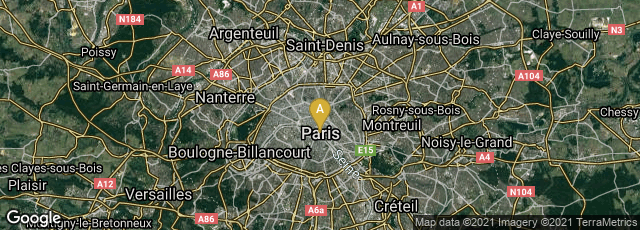

A: Paris, Île-de-France, France
Even though only 200-250 sheets could be printed per hour on a hand press, significant circulation of newspapers and pamphlets could be achieved with hand presses, if they were operated for long enough hours, or if several hand presses printed the same texts simultaneously. During the French Revolution printers turned out many thousands of pamphlets and newspapers, sometimes as many as 10,000 to 12,000 copies of individual newspapers. To achieve this circulation they would have had to print on several hand presses, and perhaps operate those hand presses 24 hours per day.
"Even more than by the prints, the French Revolution was sustained by the explosive growth of the press.4 Under the sign of the Revolution, newspapers that were once an affair of the elite suddenly developed into a mass medium – something that is taken for granted today. If the number of political bulletins in France before the Revolution could be counted on one hand, it soon mushroomed to over three hundred weekly and daily newspapers between July 1789 and 1790. They were typically "one-man newspapers", for the profitable pre-industrial conditions of production (low wages, cheap materials, simple hand presses) still predominated. These papers competed to win the favour of a dramatically growing readership with low prices. Some 1,600 different newspapers were established during the Revolution, many though for only a short time. The highest printruns over several years were achieved by radical revolutionary papers like the Révolutions de France under Louis-Marie Prudhomme (1752–1830) and the Annales patriotiques (10,000–12,000 copies) under Jean-Louis Carra (1743–1793) and Louis-Sébastien Mercier (1740–1814) . The ultra-royalist Ami du Roi founded by the Abbé Thomas-Marie Royou (1743–1792) , however, also had 5,700 subscribers, still twice as many as any journal in Old France. The total daily circulation of the Parisian newspapers alone amounted to 130,000 copies in 1791, reaching the 150,000 mark in 1797. About half of this production was regularly sent to the provinces, forcing the postal service to greatly expand its capacity. The social reach of the new press was considerable, especially since each individual newspaper at the time was commonly received by an average of about ten adult readers, due to collective reading which was common at the time. This meant three million readers or over ten per cent of the population, which in turn was an exceptional impetus to the democratization of political information and opinion.
"New journalistic techniques were also incorporated in the revolutionary press, starting with the external aesthetics and mode of public presentation. The unstructured, narrowly printed text columns of the old gazettes gave way to a layout with headlines, editorials and regular categories. This is especially noticeable in the poster newspapers of the Paris Commune. The more radical the paper, the more eye-catching and blatant was the appearance. Hence the headlines in each edition of Ami du Peuple from Jean-Paul Marat (1743–1793) took up a large part of the title page for the hawkers to call them out. In France, newspapers were first sold on the street at the time of the Revolution , as the example of the Journal du soir under Etienne Feuillant (1768–1840) confirms: 10,000 copies of the paper were printed up, delivered, and "sung" at night by 180 paperboys on the streets of Paris in 1792" (http://ieg-ego.eu/en/threads/european-media/european-media-events/rolf-reichardt-the-french-revolution-as-a-european-media-event, accessed 12-2018).